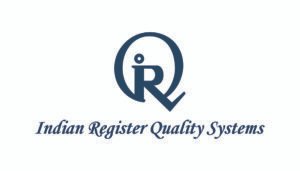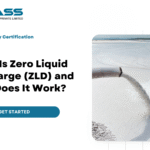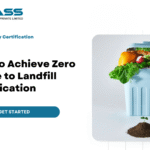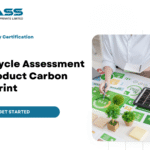What is SOC 2? The Ultimate Guide to SOC 2 Compliance & Certification
July 23, 2021 2025-02-13 12:14What is SOC 2? The Ultimate Guide to SOC 2 Compliance & Certification

What is SOC 2? The Ultimate Guide to SOC 2 Compliance & Certification
An Overview by Team IRQS - ISO Certification Body
ToggleIn this digital era, security and privacy is a must. Mishandling of sensitive data can leave companies vulnerable to attacks, such as data theft, extortion and malware installation.
To do good business, companies are increasingly being asked to provide a level of insurance around their information security programs. Therefore, Service Organization Control (SOC) reports are becoming more and more popular in data security and compliance, especially SOC 2.
But what is a SOC report? Do you need one? Which one do you need? Why is a SOC 2 report essential? Let’s dive in and see!
What is SOC 2?
What is a SOC 2 Report?
A SOC 2 report is a report that service organizations share with user organizations and stakeholders to demonstrate that a particular service is being provided securely, which is increasingly essential in today’s digital age.
SOC 2 report/certification is issued by third-party auditors. They evaluate an organization’s information systems relevant to one or more of the five trust principles – security, availability, processing integrity, confidentiality, and privacy.
Audits are not conducted by the AICPA itself; instead, certified third-parties auditors are hired by vendors and service providers to get certified.
The SOC 2 audit is the auditor’s opinion on how that organization’s controls fit the requirements. The result of a clean (passed) opinion is that, according to the auditor, the data provider can be trusted as a secure service organization.
The two types of SOC 2 reports are:
- Type 1 describes the relevance of design controls and a description of a service provider’s approach.
- Type 2 focuses on the operational effectiveness of those systems.
The Five Trust Principles
The five trust principles are the core of SOC 2’s requirements, which must be reflected in the policies and procedures. The five Trust Services Criteria are:
Security: The system resources must be protected against unauthorized access (both physical and logical). Some IT security tools that ensure security are firewalls, 2FA (two-factor authentication) or MFA (multi-factor authentication), and intrusion detection.
Availability: A service organization must ensure that its information and systems are available and accessible so an organization can effectively function. It also reviews how often customers can access products and services. The availability criteria also demand that a company should have a documented business continuity and disaster recovery plan and procedures.
Processing integrity: Data and system processing must be accurate, complete, authorized and timely. Processing integrity is not included within SOC 2 as frequently as the availability and confidentiality of TSCs. Processing integrity is only relevant to companies that process transactions such as payments. This trust principle also details process monitoring and quality assurance.
Confidentiality: Confidential data—like business plans, IP content, and sensitive financial data—should remain protected and secure. Some practices for maintaining confidentiality are encryption, rigorous access controls, and network & application firewalls.
Privacy: The system’s collection, use, retention, disclosure and disposal of personal information should comply with the company’s data policies and AICPA’s Generally Accepted Privacy Principles (GAPP). 2FA, encryption, and proper access controls must be put in place to prevent unauthorized access.
Unlike other compliance regulations, companies need not cover all the five above. When you are audited, you will choose which trust principles you want to attest to. This is a business decision that depends on what is most important to your customers.
Who Needs a SOC 2 Report?
- Software as a service (SaaS) vendors.
- Companies that provide business intelligence and analytics services.
- Accounting and auditing businesses.
- IT security service providers.
- Pharmaceuticals.
- Legal firms.
- Managed Security Services (MSS) Providers.
- Insurance claims processing
- Human resources
- Data analysis
- Document and records management
- Workflow management
- Customer relationship management (CRM)
- Technology consulting.
How To Be a SOC 2 Compliant: 7 Simple Steps to Certification
Getting to SOC 2 compliance can be a tedious process, with a lot of moving parts, policies, and procedures to align. We suggest a methodical approach:
Step 1: Appoint your SOC 2 team members.
Step 2: Establish your goals. Do you want a Type 1 report or a Type 2 report? Do you want SOC 2 certification for a single product or service or your entire organization?
Step 3: Determine your scope. Begin by establishing which of the SOC 2 Trust Service Categories apply to your organization? Which of SOC 2’s 61 Trust Services Criteria (TSCs) apply to your company?
Step 4: Organize your materials. For each Trust Services Criterion, determine which controls apply. Evaluate whether they are effective, resolve any gaps, and gather the documents and correspondence proving the effectiveness of your controls. Organize evidence around the five trust categories: security, availability, confidentiality, processing integrity, and privacy of customer data.
Step 5: Self-audit. This step can save costs down the road. If the auditor finds any issues or gaps, it can drive up audit costs. However, thorough preparation using a SOC 2 audit checklist is your best bet here.
Step 6: Monitor yourself. Continuously monitoring for suspicious activities and setting up alarms to trigger when a security incident occurs can help keep you from falling out of compliance before the SOC 2 auditor arrives.
Step 7: Perform a SOC 2 audit. Call an independent Certified Public Accountant who is qualified to perform your SOC 2 audit. The audit process involves scoping, artefact document collection, and an on-site visit.
Get SOC 2 Compliance Preparations Started Today!
IRCLASS is here to help you.
We can help reduce the effort needed to gather required information while also helping you and your staff gain a deep understanding of the SOC 2 requirements.
To receive a quote, write to us at irqs.marketing@irclass.org. Get all your questions answered, choose the package that works best for you, and then you are ready to go!
Recent Posts
Follow us on
Categories
ISO Certification Body in India | Trusted Certification Experts in India
IRQS is a leading ISO certification body with 25+ years of experience, offering ISO certification and training services to over 5,000 clients worldwide.
ISO 9001 Certification Body - Best Service & Lowest Price
Apply for ISO Certification in India. IRQS is one of the leading Certification bodies that offers internationally recognized ISO certification
Cities we cater for ISO Certifications in India: iso certification in india, iso certification body, iso certification in Mumbai, iso certification in Bangalore, iso certification in Ahmedabad, iso certification in Bhavnagar, iso certification in Kolkata, iso certification in Chennai, iso certification in Delhi, iso certification in Goa, iso certification in Hyderabad, iso certification in Kandla, iso certification in Kochi, iso certification in Pune, iso certification in Bhopal, iso certification in Vadodara, iso certification in Tiruchirapalli, iso certification in Visakhapatnam, iso certification in Port Blair, iso certification in PARADIP, iso certification in Surat, iso certification in JAMNAGAR, iso certification in KAKINADA, iso certification in COIMBATORE, iso certification in TRICHY
By Certification: ISO 9001 certification, Quality Management System (QMS) certification, ISO 14001 certification, Environmental Management Systems (EMS) certification, ISO 45001 certification, Occupational Health and Safety Management Systems (OHSMS) certification, ISO 50001 certification, Energy Management Systems (EnMS) certification, ISO 27001 certification, Information Security Management Systems (ISMS) certification, ISO 27701 certification, Privacy Information Management System certification, FAMI-QS Certification, Feed Additives and Pre-mixtures Quality System Certification, BRCGS certification, Brand Reputation through Compliance Global Standards, IATF 16949 certification, Automotive Quality Management Systems Certification, ISO 22000 certification, Food Safety Management Systems (FSMS) certification, FSSC 22000 Certification, Food Safety System Certification (FSSC) certification, Ayush Certification, Ayush Mark Certification, fssai third party audit, food safety auditing, ISO 21001 Certification, Educational Organization Management System (EOMS) certification, ISO 28000 Certification, Security Management System for Supply Chain (SCSMS) certification, ISO 13485 Certification, Medical Device Quality Management System Certification, SOC 1 Report, SOC 2 Report, IMS certification, integrated management system certification, GDPR Certification, general data protection regulation certification, SOC 2 Certification, SOC 2 Compliance, service organization controls certification, VAPT certification, Vulnerability Assessment and Penetration Testing Certification, ISO 22301 Certification, bcms certification, Business Continuity Management Systems certification
By Sector: ISO Certification for Engineering & Manufacturing, ISO Certification for Automotive, ISO Certification for Health Care, ISO Certification for Food & Beverages, ISO Certification for IT & ITES, ISO Certification for Marine, ISO Certification for Education, ISO Certification for Oil & Gas, ISO Certification for Construction, ISO Certification for Energy, ISO Certification for Retails, ISO Certification for Defence, ISO Certification for Medical Device, ISO Certification for Mining, ISO Certification for Financial Services
By Training: ISO 9001 training, ISO 9001 Lead Auditor Training, QMS training, ISO 14001 training, ISO 14001 Lead Auditor Training, ISO 45001 Training, ISO 45001 Lead Auditor Training, ISO 27001 Training, ISO 27001 Lead Auditor Training, ISO 22301 training, ISO 22301 Lead Auditor training, ISO 9001 Internal Auditor, ISO 14001 Internal Auditor, ISO 45001 Internal Auditor, Integrated Management Systems (IMS) Training, IATF Internal Auditor Training, FSSC 22000 Internal Auditor Training, ISO 22000 Internal Auditor Training, ISO 50001 Internal Auditor Training, ISO 21001 Internal Auditor Training, ISO 13485 Internal Auditor Training, ISO 27001 Internal Auditor Training, ISO 28000 Internal Auditor Training, IRCA accredited training
By Sustainability: esg services, esg solutions, esg certification courses, sustainability certification courses, life cycle assessment certification, sustainable development certificate, life cycle analysis certification, sustainability certification program, sustainability verification & Validation, sustainability report assurance, sustainability assurance, sustainability reporting verification & Validation, sustainable claim verification & Validation, green house emissions & assurance, pas 2050 certification, pas 2050 verification, carbon footprint of products, carbon footprint solutions, iso 14067 certification, iso 14067 verification & Validation, iso 14064 certification, iso 14064 verification & Validation, carbon footprint verification, ghg verification, iso 14064 certification course, iso 14064 lead Implementor training, iso greenhouse gas standards, pas 2060 certification, pas 2060 carbon neutral certification, pas 2060 verification, carbon neutrality standard & certification, carbon neutral verification, carbon footprint management, carbon emission management, pas 2080 certification, carbon management in infrastructure, pas 2080 verification, greenhouse gas emissions management, iso 26000 training, social responsibility management system, csr management system, social responsibility lead implementor, life cycle assessment course, life cycle assessment certification, lca course, life cycle analysis course, life cycle assessment training, iso 14040 training, iso 14044 training, life cycle assessment training program, iso 14064 certification, iso 14064 training, iso 14064 certification course, iso 14064 lead auditor training, iso 14067 training, iso 14067 certification, product carbon footprint lead implementor, ghg accounting, green house gas accounting, lead verifier certification program, iso ghg accounting, sustainability reporting, esg reporting, gri standards, csr reporting, gri reporting standards, global reporting initiative standards, gri sustainability reporting, sustainability reporting in line with gri standards, business responsibility and sustainability reporting, brsr training, iso 20400 training, sustainable procurement awareness, sustainable procurement, iso 27001 lead auditor, iso 27001 lead implementer, iso 27001 implementer, water footprint management, iso 14046 training, water footprint verification, carbon border adjustment mechanism, cbam regulation, cbam training, AA1000 assurance, reasonable level assurance, limited level assurance, ISAE3000 Assurance, ISAE3410 Assurance, LCA Critical review, CDP verification and validation, BRSR assurance, Zero waste to landfill certificate, responsible plastic management, Scope 1, 2, and 3, Upstream and downstream waste management, Marine Stewardship Council responsible fishing standard
Other Services: Testing Services, HKC and EU Certification, Ship Recycling Regulations, Ship Recycling Training, Coal Inspection Testing, Coal Sampling and Testing, green audit, Environmental Audit, Cyber Security, ResponsibleSteel
List of Top ISO Certification Companies in India
List of iso certification body in india, Top 10 ISO certification bodies in India, ISO certification body list, List of ISO 9001 Certification bodies in India, Who can issue ISO certification in India, ISO certification list, ISO certification for individuals, ISO certification full form





